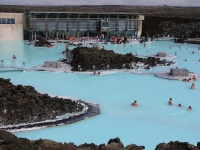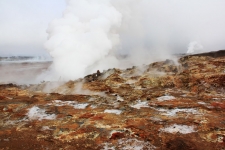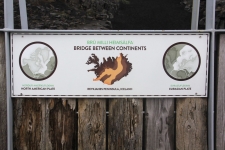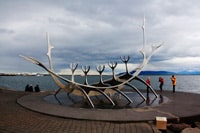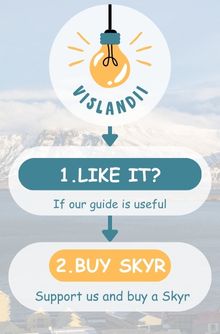The Reykjanes Peninsula is famous for its large lava fields and active volcanic phenomena, such as numerous hot springs and geothermal energy. Even translated from Icelandic, Reykjanes means "cape of smoke". The rocky landscapes are also impressive. It is because of this that this region is very sparsely populated. But for tourists, this is only a plus - because there are few places where you can be alone with wildlife.
The Reykjanes Peninsula has an active volcanic system under its surface, located in the southwest of Iceland. The peninsula is quite sparsely populated, with the exception of the capital area of Reykjavik, which is the largest city on the peninsula. In addition, Keflavik International Airport is located in this region, where most tourists arrive. And the acquaintance with Iceland begins with lava fields covered with gray-green moss. There are also several other small towns - Grindavik, Sandgerdi, Vogar, Hafnir and Gardur, as many decades ago, they exist due to fishing. And if you want to look at the traditional way of life in Iceland, then it's worth visiting them. Even though in recent years, due to the growing number of tourists in Iceland, life here has changed a lot.
Content:
- Volcanic and geothermal activity
- Nature and wild life of Reykjanes
- What to see on the Reykjanes Peninsula
- Gunnuhver Thermal Fields
- Bridge the rift between Europe and America
- The capital of Iceland is Reykjavik
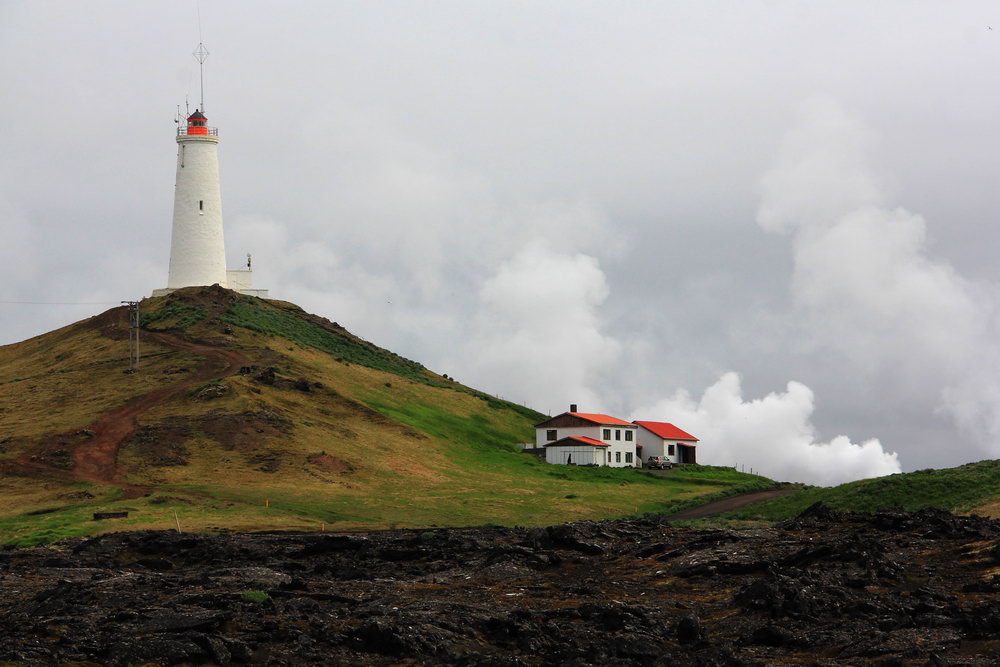
Volcanic and geothermal activity
The peninsula runs along the Mid-Atlantic Ridge, where the junction of the Eurasian and North American tectonic plates is located. Gradually, they diverge in different directions. It is because of this movement of continents in different directions that Iceland has so many volcanoes and other traces of global geological processes. And it is precisely because of this fault that the entire peninsula is extremely volcanically active, covered with frozen lava fields and volcanoes. And small earthquakes occur here with enviable regularity. So it is quite possible that you will feel one of them on yourself. But there is no need to be afraid, they are mostly quite weak and do not cause any damage.
In the Middle Ages, there were many volcanic eruptions and huge lava flows in the area of Reykjanes. But no eruptions have been recorded in the last 500 years.
The main geothermal areas of Reykjanes are Gunnuhver, Krisyuvik and Svartseni.
In Gunnuhver, you can see various mud pools and fumaroles - outlets of hot underground gases.
Krisuvik is characterized by hot springs and mud puddles, which give the soil colorful shades. Another interesting place is the lake in the crater of the volcano Grænavatn with green water.
There is a geothermal power plant in Svartsen that produces 76.5 MW of electricity. 475 liters of hot water with a temperature of 90 ° C flow out of the ground every second. The world-famous Blue Lagoon spa resort is also located here. Mineral-rich water is used not only for energy generation but also for outdoor hot pools.
The Blue Lagoon in Iceland: A Relaxing Oasis in the Land of Fire and Ice
Iceland is a land of stark contrasts, where rugged landscapes and stunning natural wonders coexist in harmony. Amidst the dramatic scenery and otherworldly beauty, the...
Nature and wild life of Reykjanes
The cliffs of Reykjanes are teeming with birds. The most famous bird colony is located in Krisuvirkurjag, which is a nesting place for about 80 thousand seabirds. To the north of Krisuvikurbjarg is Kleifarvatn, the largest lake on the peninsula and one of the deepest in Iceland. Also in the central part of the peninsula is Lake Jupavatn, a very popular fishing spot.
One of the most spectacular waves in the world can be observed in Reykjanes. A short drive from Krisuvik is Selvugur, where you can see the biggest waves in Iceland. In Reykjanes, the southwestern tip of the peninsula, waves can reach a height of 20-30 meters.
The northern side of the peninsula is dotted with fishing villages and towns, primarily Keflavik, Sanjir, Gardur and Vogar. The city of Grindavik is located on the southern shore of the peninsula. At the same time, the towns of Keflavik, Njardik, Hafnir and Asbru make up the municipality of Reykjanes, which consists of more than 16,000 inhabitants, making it the fifth largest municipality in Iceland.
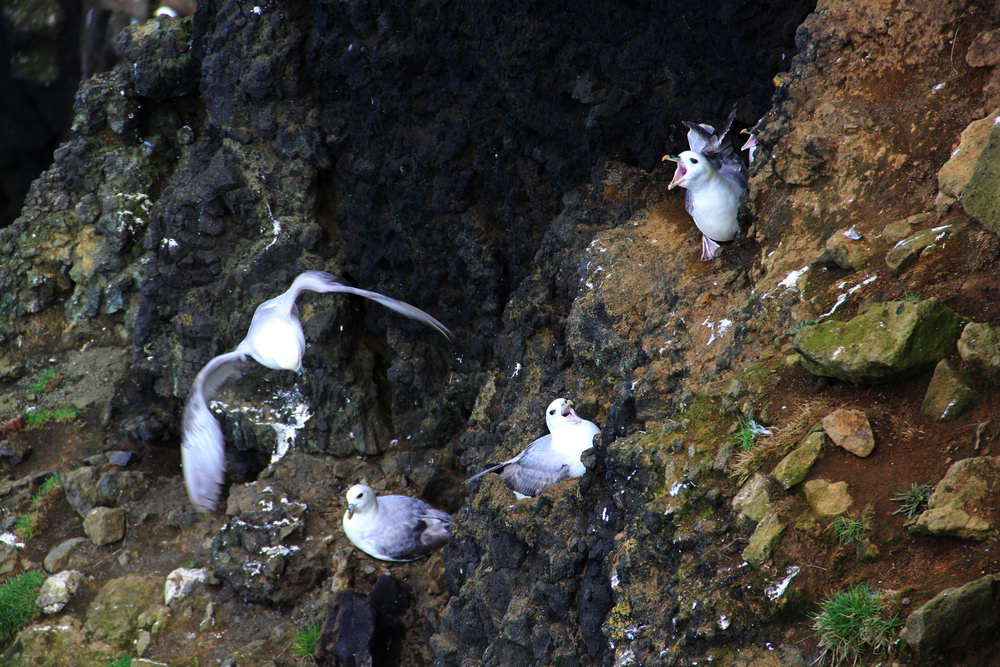
What to see on the Reykjanes Peninsula
There are a huge number of leisure options in the Reykjanes area, ranging from spa resorts to snowmobile or ATV rides. Cycling trips to the mountains are also popular. In addition, there is no shortage of hiking trails in the area.
Several low mountain ranges are located on the peninsula, the most prominent peak of the range is Mount Keilir, a small cone-shaped volcano. Tourists love this volcano because it is not too high, but still represents a rather difficult task, the ascent takes about 2-3 hours. As soon as you climb to the top, you will get a wonderful 360 degree view that is simply breathtaking.
The Leidarendi Cave or from the Icelandic "End of the Road" is a long lava cave about 900 meters long, discovered two decades ago and open to visitors. There you can see the unique rock formations and interesting colors of the rock that formed the crevice about 2000 years ago. In winter, you can also see amazing icicles and natural ice sculptures in the cave.
Apart from the rich fishing industry, Reykjanes is also known for its numerous lighthouses. Some even say that the number of lighthouses exceeds the number of settlements. The most famous lighthouse, as well as the oldest in Iceland, is the Reykjanes Lighthouse, which is 29 meters high and located 69 meters above sea level.
And of course, one of the most famous sights of Iceland is also located on the territory of the Reykjanes Peninsula - the Blue Lagoon geothermal complex. Read more about it in a separate article dedicated to this unique place:
Gunnuhver Thermal Fields
Mud pools and steam outlets in the southwestern part of Reykjanes are called Gunnuhver in honor of the ghost of a girl who, according to legend, was buried there. The legend says that the girl was under the influence of evil spirits, in the process of their expulsion by the priest, she turned into a hot spring. It happened more than 400 years ago.
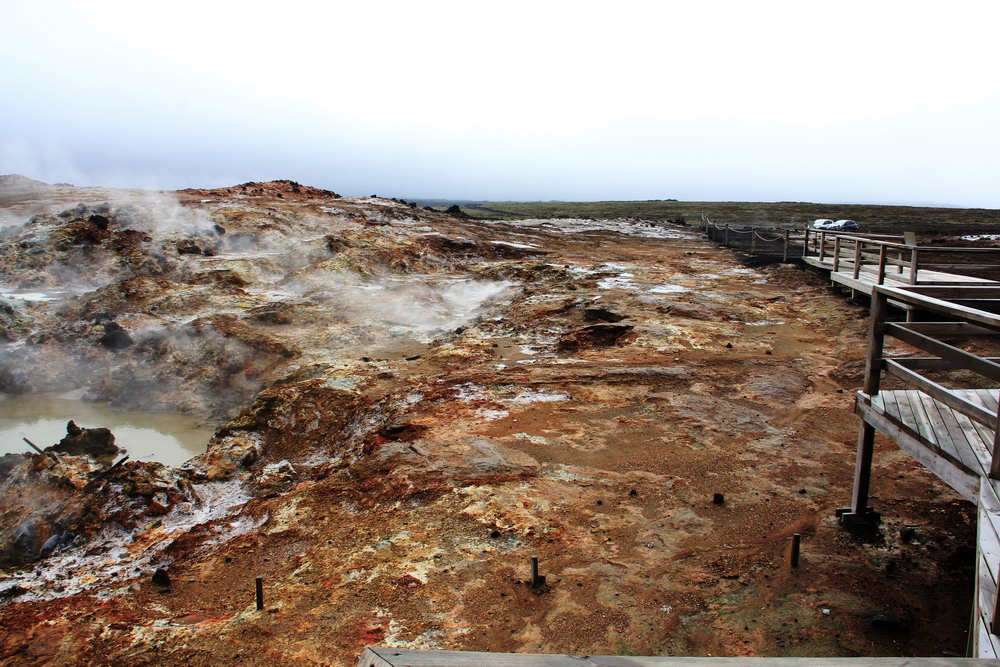
Special wooden paths have been laid along the territory of the Gannuhver geothermal zone. It is very dangerous to get off them, as you can fall into a pit filled with hot mud or into a puddle with boiling water. Clouds of hot gases are bursting out of the ground. From the observation decks you can look at the sources from which boiling water gushes, rumbling and noise are also heard everywhere, you immediately understand what powerful energy is hidden underground.
The second wooden path is located on Kisilkhol, which is a quartz hill. There is a great view of the Gannuhver area and the surrounding area. You can read more here:
Geothermal Zone Gunnuhver: An Enchanting Experience in Iceland
Iceland is famous for its breathtaking landscapes, unique natural wonders, and geothermal energy. One of the most impressive geothermal attractions in Iceland is the G...
Also, if you are interested in reading more about the sights of the Reykjanes region, then you can use https://guidetoiceland.is/travel-iceland/drive/reykjanes.
Bridge the rift between Europe and America
The Reykjanes Peninsula lies on one of the borders of the largest tectonic plates in the world - on the Atlantic Fault. According to the theory of continental drift, the Eurasian and North American tectonic plates are continuously drifting. Now these tectonic plates are diverging in different directions and a sinkhole is forming in this place, which is gradually increasing. This fault is also one of Iceland's tourist attractions.
The bridge between the two continents in Sandvik is a small pedestrian bridge over the rift between the continents. The bridge was built as a symbol of the connection between Europe and North America and is called the "Bridge of Continents"
The Bridge between America and Europe, America - Europe Bridge
The bridge between Europe and America is located on the Reykjavik Peninsula in Iceland, very close to Reykjavik and very close to Keflavik International Airport. The B...
The capital of Iceland is Reykjavik
In addition to all the natural attractions, the capital of Iceland, the city of Reykjavik, is located in the region of Reykjavik. The city itself is also interesting and worth a visit, if only to look at the famous sculpture "Sunny Wanderer", the main church of the city and visit the old harbor with many restaurants.
Reykjavik and its attractions, what to see
Reykjavik is the capital of Iceland and the largest city on the island. Usually, all trips to Iceland begin or end with a tour of Reykjavik. So what to do in this nort...

